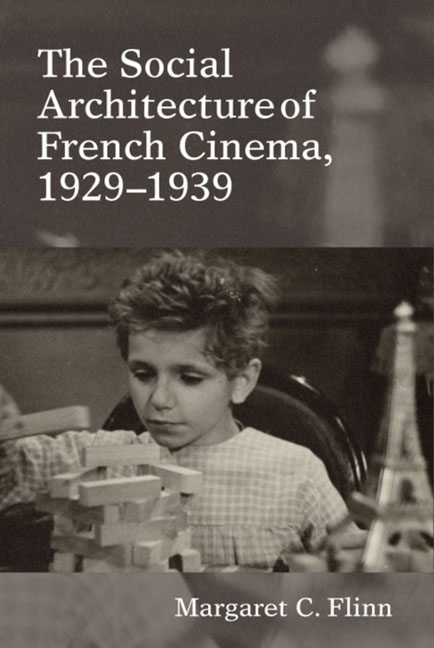Book contents
- Frontmatter
- Contents
- List of Illustrations
- Acknowledgements
- Introduction: An Architecture of Social Being
- 1 The Spatial Constitution of 1930s Documentary
- 2 René Clair's City Views: Realism and Studio Paris
- 3 Intertext and Political Margins in Jean Renoir's Boudu sauvé des eaux
- 4 Traversing Built History in Architectural Documentaries
- 5 Flâneuses and the Unmaking of Place
- 6 The Crowd as New Monumentality during the Popular Front
- Epilogue: Poetic Realism as Spatial Fable
- Notes
- Bibliography
- Filmography
- Index
Introduction: An Architecture of Social Being
- Frontmatter
- Contents
- List of Illustrations
- Acknowledgements
- Introduction: An Architecture of Social Being
- 1 The Spatial Constitution of 1930s Documentary
- 2 René Clair's City Views: Realism and Studio Paris
- 3 Intertext and Political Margins in Jean Renoir's Boudu sauvé des eaux
- 4 Traversing Built History in Architectural Documentaries
- 5 Flâneuses and the Unmaking of Place
- 6 The Crowd as New Monumentality during the Popular Front
- Epilogue: Poetic Realism as Spatial Fable
- Notes
- Bibliography
- Filmography
- Index
Summary
Architecture is the expression of the very being of societies, just as the human physiognomy is the expression of the being of individuals.
—Georges Bataille, “Architecture,” 1929If the cinema is put in the service of a unanimous social effort capable of delivering us from individualism while exalting and using all the spiritual resources of the individual in order to ensure the development of this effort, we are right in seeing in it the instrument of the most incomparable communion, at least since the time of grand architecture, that man has yet had at his disposal.
—Élie Faure, “Introduction à la mystique du cinéma,” 1934The arrival of sound cinema (the French industry converted between 1929 and 1931) was accompanied by a reopening of questions about the artistic status of the medium. During both the silent and early sound eras, nascent theorization of the status of the cinema frequently took the rhetorical form of a comparison between the seventh art and one or more other, more established arts. The comparison between architecture and cinema is one that bears particular relevance for understanding cinema as a social medium: both are the product of the marriage of creative inspiration and artisanal savoir faire, and both are experienced by social collectivities (audiences, communities of building users that vary depending upon the building's function). Film critic, screenwriter, novelist, and dramaturge Alexandre Arnoux considered this idealist investment in the cinema as an art of the crowd to be threatened by television. In a 1934 lecture, he said:
When the home screen arrives, film as the art of the crowd, of the mass, of unanimity, of group assembly, will change character. It will go from the epic form of simple and popular inspiration, to nuance and personal lyricism. We will no longer ask of it to grant us strength experienced in common, the collective thunderbolt, but the motif of dreams. We will no longer seek in it oblivion and fusion, but rather separation and remembrance.
- Type
- Chapter
- Information
- The Social Architecture of French Cinema1929–1939, pp. 1 - 16Publisher: Liverpool University PressPrint publication year: 2014



